#Dec 1969
Text
The End – Dreamworld
#The End#Introspection#Dreamworld#Format:#Vinyl#LP#Album#Released:#Dec 1969#Psychedelic Rock#British pop rock group#UK
2 notes
·
View notes
Text

this NME article starts by roasting john so bad it's got accurate death foreshadowing
#dec 20 1969 same one with the yoko birth jealousy quote#(does anyone know what the pirate ship thing is about?)#john lennon
153 notes
·
View notes
Text

Frosty the snowman! ☃❄
#the original frosty tv special aired on dec 7th 1969. so i drew him yesterday :]#love this silly guy#frosty#frosty the snowman#rankin bass#cartoon#character art#character design#digital art#fanart#illustration#nostalgia#christmas#winter#snowman#holidays#my art
441 notes
·
View notes
Text
Symptom of being comp sci is endlessly attempting to explain the significance of Dec 31 1969 to literally everyone forever
#its the unox epoch date! time is measured as the number of seconds since the beginning of 1970!#when that timestamp is lost it defaults to 0 and is interpreted as Dec 31 1969 23:59:59
1 note
·
View note
Text
robotgirl whos always so so sleepy all the time because their internal clock is broken and permanently stuck at 11:59:59pm on dec 31 1969 and thats Bedtime
7K notes
·
View notes
Text
50 Years Ago: Apollo 17
Not long after midnight on Dec. 7, 1972, the last crewed mission to the Moon, Apollo 17, lifted off with three astronauts: Eugene Cernan, Harrison Schmitt, and Ronald Evans.
Experience the Apollo 17 launch and follow the mission in real time.
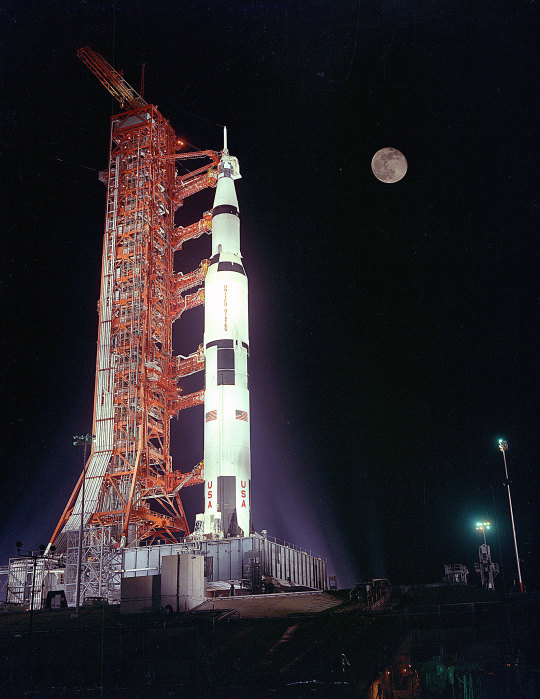
Meet the Crew
Let’s meet the astronauts who made the final Apollo trip to the Moon, including the first scientist-astronaut.
Gene Cernan: In 1972, Apollo 17 Mission Commander Eugene A. Cernan had two space flights under his belt, Gemini 9 in June 1966, and Apollo 10 in May 1969. He was a naval aviator, electrical and aeronautical engineer and fighter pilot.
Ron Evans: Apollo 17 Command Module Pilot Ronald E. Evans was selected as a member of the 4th group of NASA astronauts in 1966. Like Cernan, he was an electrical and aeronautical engineer, and naval aviator before his assignment to the Apollo 17 crew.
Harrison (Jack) Schmitt: Lunar Module Pilot Dr. Harrison (Jack) Schmitt joined NASA as a member of the first group of scientist-astronauts in 1965. Before working for NASA, Schmitt was a geologist at the USGS Astrogeology Center. He was on the backup crew for Apollo 15 before being selected for the prime crew of Apollo 17. He became the first of the scientist-astronauts to go to space and the 12th human to walk on the Moon.
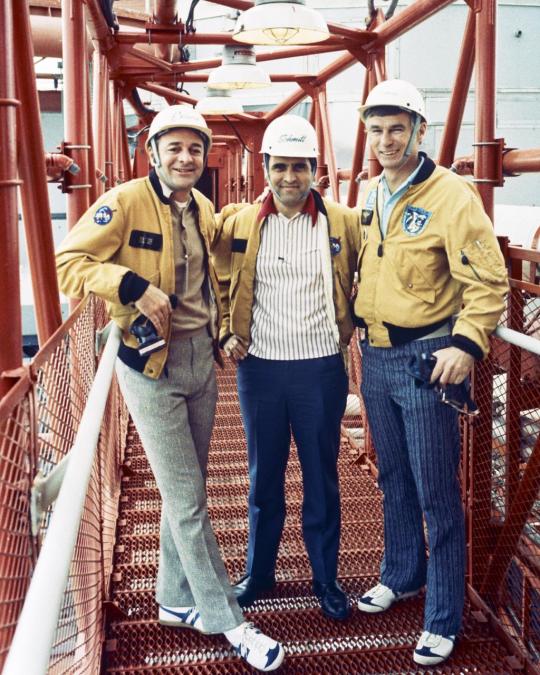
The Blue Marble
“The Blue Marble,” one of the most reproduced images in history, was taken 50 years ago on Dec. 7, 1972 by the Apollo 17 crew as they made their way to the Moon.

Bag of Soup, Anyone?
NASA astronauts have an array of menu items to stay well fed and hydrated on missions. For Apollo 17, the menus allocated around 2,500 calories per day for each astronaut. They included:
Bacon Squares
Peanut Butter Sandwiches
Frankfurters
Lobster Bisque
Like anything going to space, weight and containment matter. That's why the Apollo 17 menu included plenty of soups and puddings.
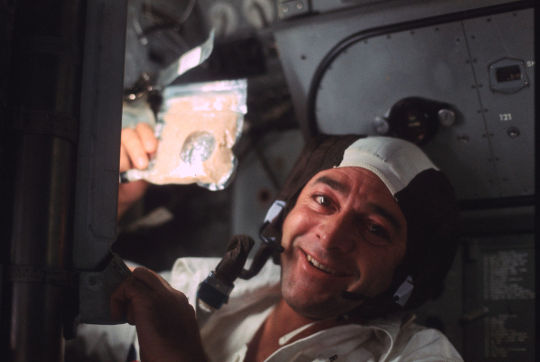
Synchronicity
On Dec. 11, 2022, the Artemis I mission will be splashing down on Earth after its 25.5-day mission. At 2:55 p.m. 50 years prior, the Apollo 17 lunar module (LM) landed on the Moon, with Commander Gene Cernan and LM Pilot Harrison Schmitt on board. Ron Evans remained in the Command and Service Module (CSM) orbiting the Moon.
Experience the landing.
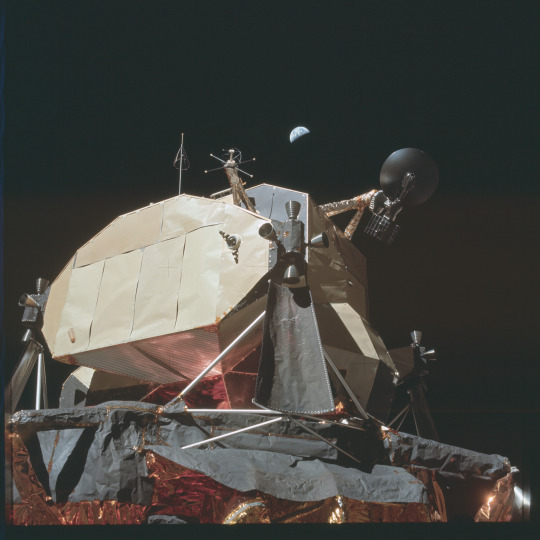
Planting the Flag
One of the first tasks the Apollo 17 crew did on their first moonwalk was to plant the American flag. There’s no wind on the Moon, but that doesn’t mean the flag has to droop. Did you know that a horizontal rod with a latch makes the flag appear to be flying in the wind? Gene Cernan carefully composed this photo to get Schmitt, the flag, and the Earth in a single shot.
So, is the flag still there? Images of the Apollo 17 landing site from the Lunar Reconnaissance Orbiter Camera show that in 2011 the flag was still standing and casting a shadow!
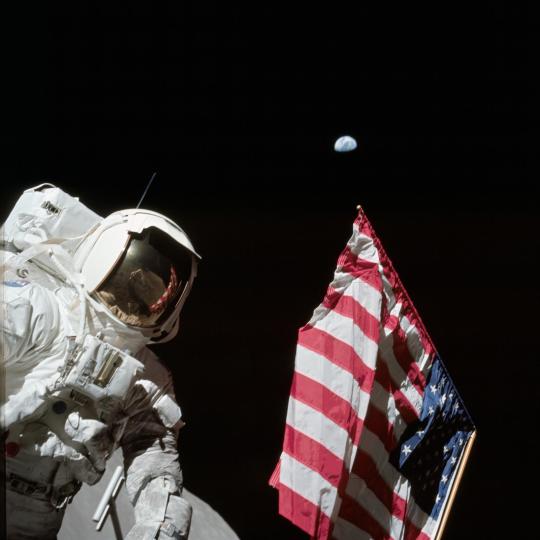
Moon Buggy
During Apollo 17, the Lunar Rover Vehicle (LRV), nicknamed the Moon buggy, logged the farthest distance from the Lunar Module of any Apollo mission, about 4.7 miles (7.5 km).
As a precaution, the LRV had a walk-back limit in the event of an issue; astronauts had to have enough resources to walk back to the lunar module if need be.
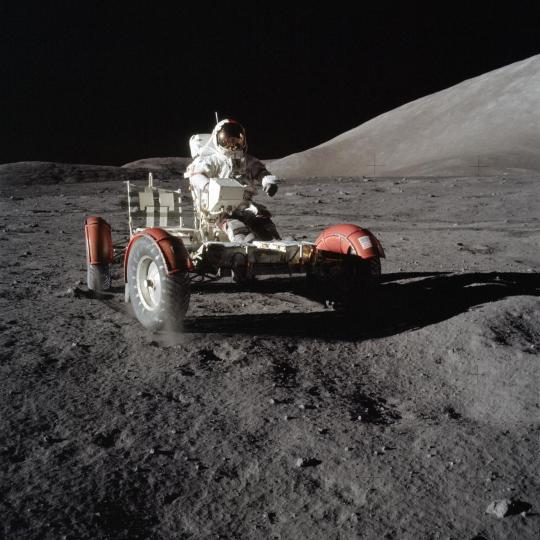
Grab the Duct Tape!
The right rear fender extension of the LRV (Moon buggy) was torn off, kicking up dust as the crew drove, reducing visibility. The crew made a resourceful repair using duct tape and maps.
For LRV fans, visiting an LRV driven on the Moon is a bit difficult since all three LRVs used on the Apollo 15, 16, and 17 missions were left on the Moon. But you can find an LRV used for training at the National Air and Space Museum in Washington.
Read more about the LRV.

The Perils of Lunar Dust
After the first lunar EVA, Apollo 17 astronaut Harrison Schmitt reported that he suffered from “lunar hay fever” in reaction to the lunar dust. Unlike Earth’s dust particles which are rounded, Moon dust particles are sharp and abrasive, irritating astronaut eyes, nasal passages, and lungs.
Curious about how Moon dust feels and smells? Find out!

So What’s it Like?
After his return to Earth, Apollo 17 astronaut Harrison Schmitt (on the right) described his time on the Moon:
“Working on the Moon is a lot of fun. It’s like walking around on a giant trampoline all the time and you’re just as strong as you were here on Earth, but you don’t weigh as much.”

Splashdown!
After 12 days and 14 hours in space, the Apollo 17 astronauts splashed down in the Pacific Ocean at 2:25 p.m. EST on Dec. 19, 1972. It was the longest of all the Apollo missions, with the most photos taken. A recovery team was waiting on the USS Ticonderoga just 4 miles (6.4 km) away to pick up the astronauts, the lunar samples, and the Crew Module.
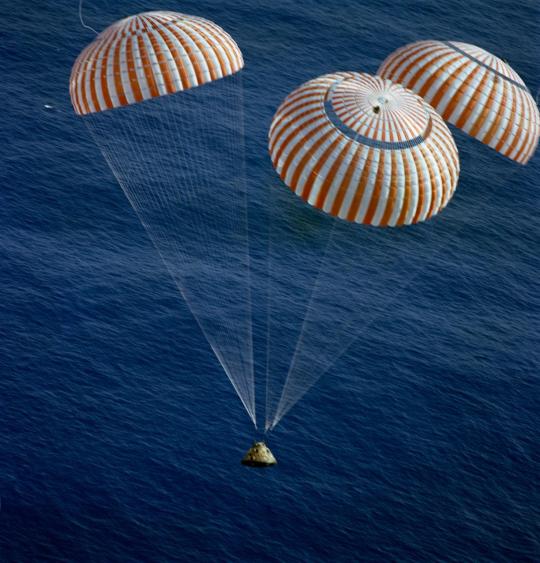
When Are We Going Back?
NASA’s Artemis Program has taken its first steps to sending humans back to the Moon with Artemis I, currently on its way back to Earth. The program plans to land humans, including the first women and person of color, on the Moon’s south polar region with its Artemis III mission, currently slated to launch in 2025.
Is aerospace history your cup of tea? Be sure to check out more from NASA’s past missions at www.nasa.gov/history.
Make sure to follow us on Tumblr for your regular dose of space!
2K notes
·
View notes
Photo
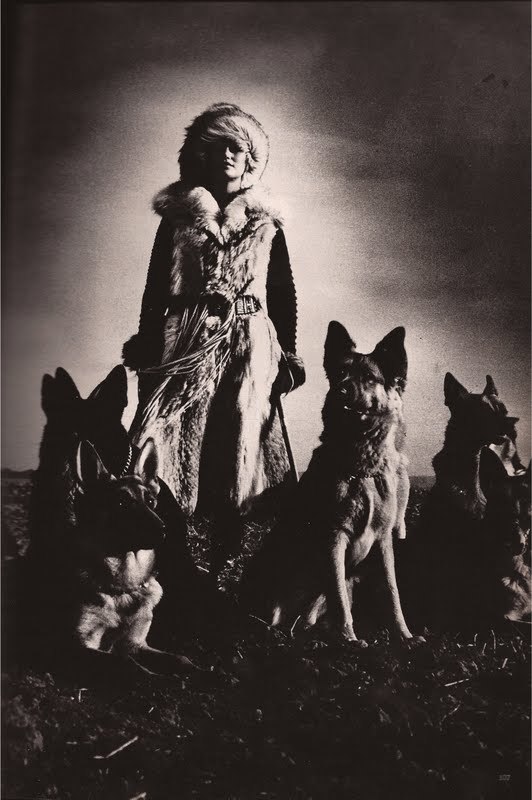
Helmut Newton - Vogue Paris (Dec. 1969)
#helmut newton#vogue#vogue paris#photography#fashion photography#vintage fashion#vintage style#vintage#retro#aesthetic#beauty#sixties#60s#60s fashion#60s model#1960s#1960s fashion#swinging sixties#editorial
196 notes
·
View notes
Text
On August 30th we venerate Young King Brother Fred Hampton on his 75th birthday 🎉

Deputy Chairman Fred Hampton was the one of THE greatest orators, leaders, and visionaries to join the Black Panther Party Of Self-Defense 🖤✊🏾
Fred Hampton was born & raised in the Chicago suburbs of Illinois. Civil liberties, rights, and laws were always of great interest to him. After graduating high school, he enrolled in a pre-law program at Triton Junior College in River Grove, Illinois. He joined his local NAACP branch to get involved in the civil rights movement. He rose to the position of Youth Council President for his strong leadership and organization skills. In this position, Brother Hampton mobilized a racially diverse group of 500 young men/women who successfully lobbied city officials to create better academic services and recreational facilities for Black American youth.
In 1968, he joined the Black Panther Party of Self-Defense, headquartered in Oakland, CA. Shortly thereafter, he was selected to head the Chicago Chapter. Here, he created strong personal and political ties with his mentor & chaplain, Father George Clements at the [then] Holy Angels Catholic Church; which served as a safe haven for the Panthers targeted for police surveillance or harassment.
Brother Hampton accomplished a great many things as a young, prolific leader of the BPP Chicago Chapter. He successfully negotiated a gang truce on live television.One of his greatest successes was an unprecedentedly integrated approach to sociopolitical unity; he formed a “Rainbow Coalition”, which included: the Students for a Democratic Society, the Blackstone Rangers, a street gang and the National Young Lords, a local Puerto Rican organization. He was the first leading Panther to achieve this. This alliance is what truly struck the cord of fear in the Chicago P.D. & the FBI. In an effort to neutralize the Chicago Chapter of the BPP, the Black Panthers were placed under heavy surveillance & were subjected to several harassment campaigns.
By 1969, several Black Panthers and Chicago cops either suffered injury or were killed in shootouts across the city, which resulted in the arrest of over 100 members. On Dec 4th of that same year, under the FBI's initiative, the County PD & Chicago PD conducted heinous, unlawful, and unnecessary raid on the Black Panther Party's HQ in the early morning hours while Brother Hampton, leader Mark Clark, and other Panthers slept. They fired over 100 rounds into the apartment without warning. Twelve officers executed Brother Hampton as he slept, drugged by a sedative slipped into his drink by "Panther"/FBI informant O'Neal. Naturally, in Jan 1970, the County Coroner's office ruled the Black Panther leaders' deaths as "justifiable homicide".
Over 5,000 souls attended Brother Hampton’s funeral. Many civil rights activates eulogized him, including his good friend and mentor Father George, who also held a Requem Mass for him at his church.
After many years of coverups, internal investigations, lawsuits, raids, and conspiracies confirmed, the FBI, County PD, & Chicago PD finally admitted to the wrongful deaths of Brother Hampton and Mark Clark. In 1990, and again in 2004, the Chicago City Council passed resolutions commemorating December 4th as Fred Hampton Day. Today, Brother Hampton rests at the Bethel Cemetery in Haynesville, LA where his parents are from - which continues to endure violent desecration from White Supremacist vigilantes/supporters.
" You can kill a revolutionary but you can never kill the revolution. People have to be armed to have power" - Young King Fred Hampton
We pour libations & give him💐 today as we celebrate him for his love of our people, his relentless dedication to the BPP cause, and his young yet wise spirit that lives on. May be the find restful peace in spirit that he was/is denied in the physical.
Offering suggestions: flower offerings at his grave, libations of water, prayers and frankincense toward his elevation
‼️Note: offering suggestions are just that & strictly for veneration purposes only. Never attempt to conjure up any spirit or entity without proper divination/Mediumship counsel.‼️
#hoodoo#hoodoos#atr#atrs#the hoodoo calendar#the black panthers#Fred hampton#Chicago#black panther party#BPP#ancestor elevation#ancestor veneration
347 notes
·
View notes
Text


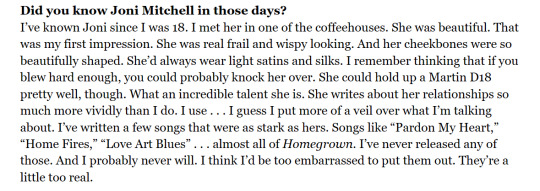

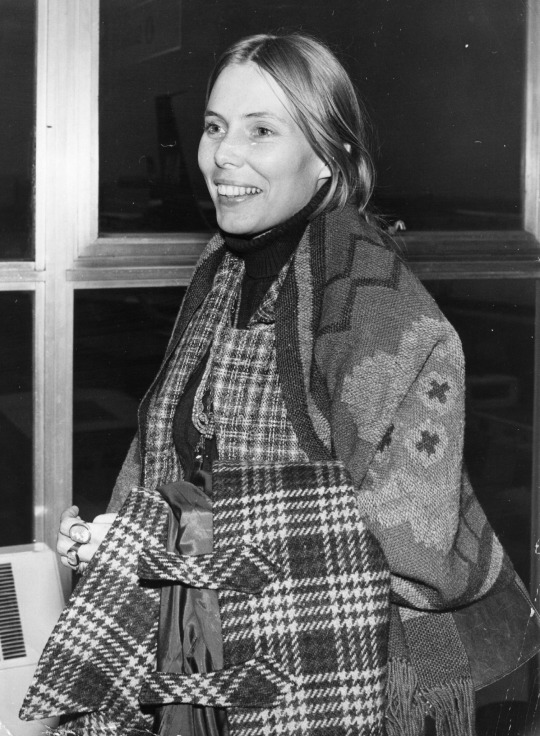
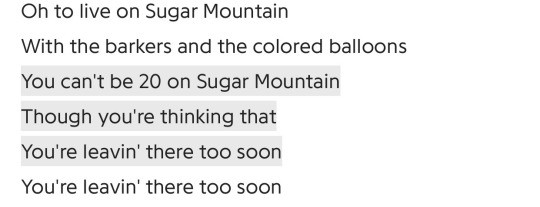
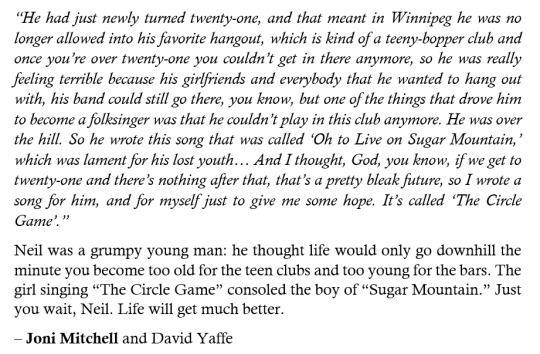
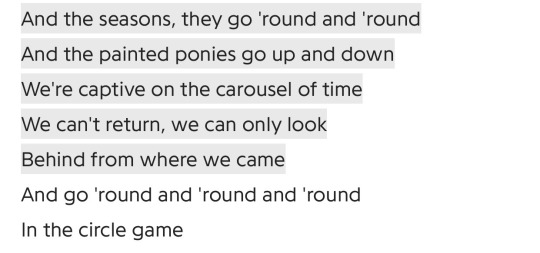
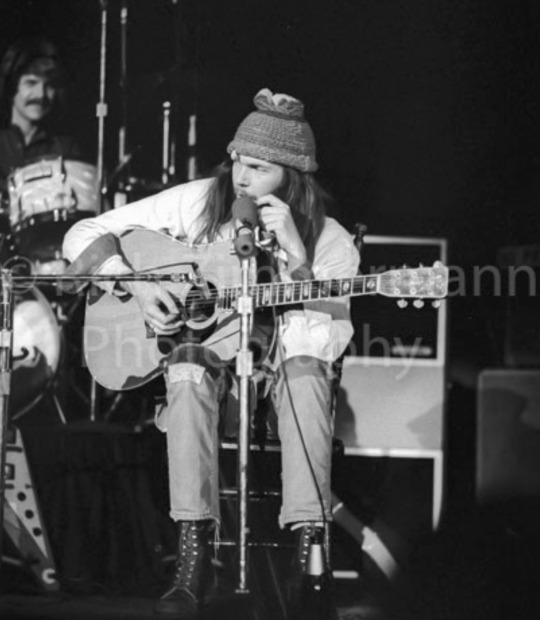

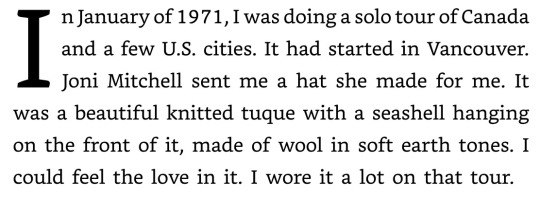




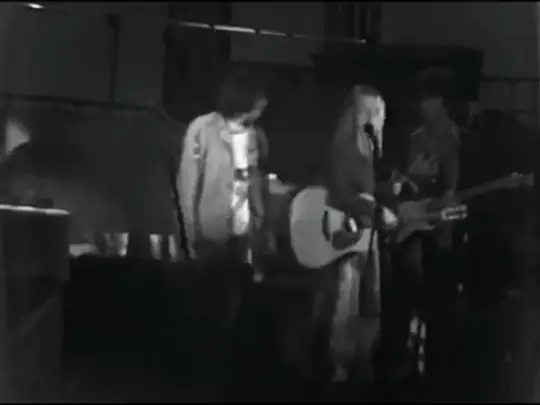
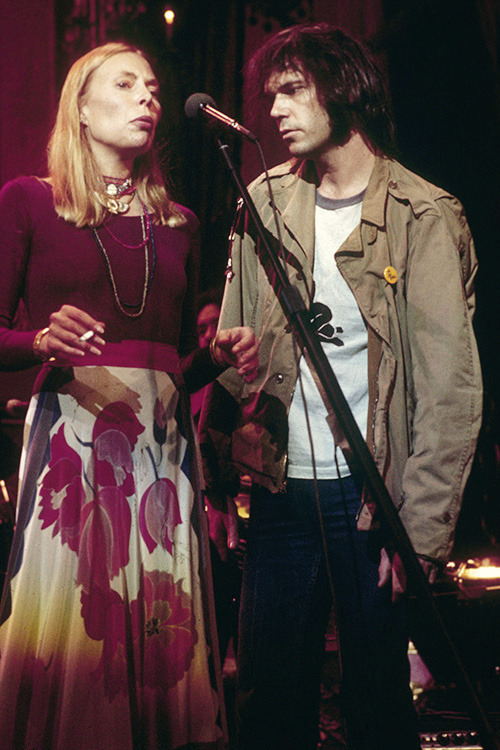


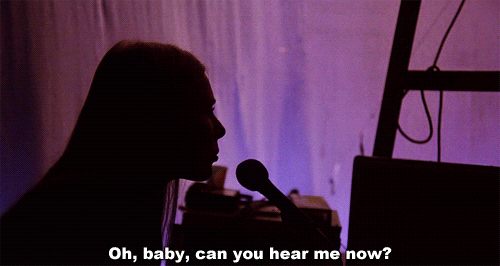



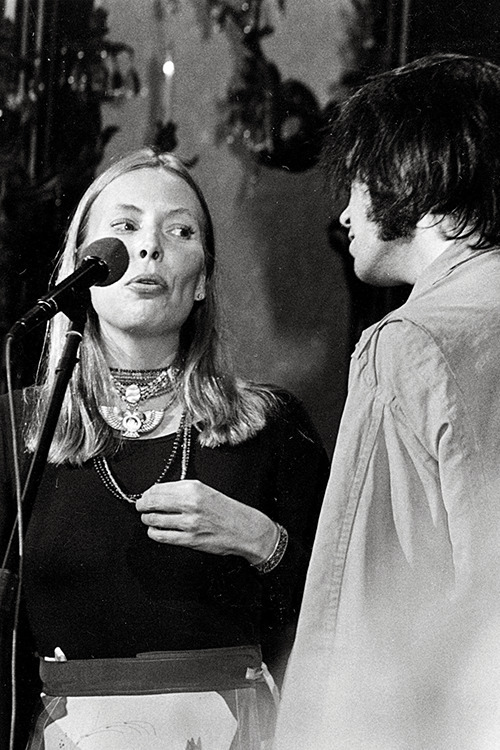


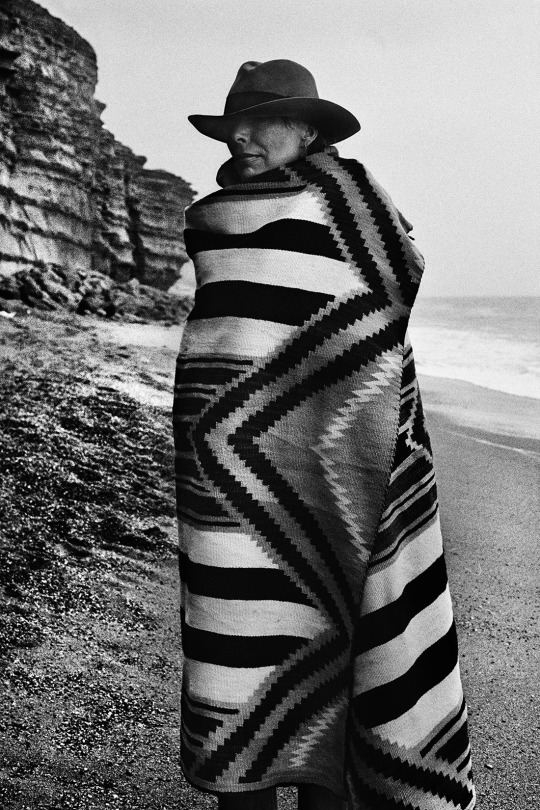


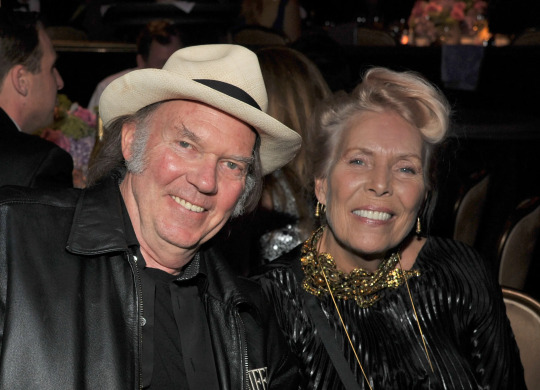
neil young & joni mitchell
Neil Young debut solo album (1969) artwork cover Roland Diehl / Neil Young Watercolour Portrait by Joni Mitchell, 1969 / Neil Young: The Rolling Stone Interview – Rolling Stone by Cameron Crowe, Aug 1975 / Joni Mitchell and Neil Young at the airport, 1969 / Sugar Mountain - Neil Young / Reckless Daughter: A Portrait of Joni Mitchell by David Yaffe / The Circle Game - Joni Mitchell / Neil Young excerpt from Waging Heavy Peace (2012), photo by Rich Zimmermann, 1973 @meadow-dusk / Joni Mitchell with Neil Young & The Santa Monica Flyers, August 26, 1973 / Review: Neil Young’s ‘Archives II’ Is a Stunning Look Back at His Peak – Rolling Stone, Nov 2020 / Neil Young excerpt from Waging Heavy Peace (2012) / Warner Records’ launch party for Neil Young’s “Tonight’s the Night” ca. June 1975 / Neil being soft with Joni at The Last Waltz following “Furry Sings the Blues” @meadow-dusk /Joni Mitchell and Neil Young, The Last Waltz, Winterland Ballroom, San Francisco, California, November 25, 1976./ The Making of The Last Waltz, the Band’s Concert-Film Masterpiece | Vanity Fair /The Last Waltz "Helpless" @joelmccrea / Joni quote / Credit on Hejira album (1976) / Neil Young photo in Rolling Stone, Dec 2021 / Joni Mitchell photo by Anton Corbijn, Chalk Mark in A Rainstorm album (1988) / 'I Stand With Neil Young!' Joni Mitchell, Jan 2022 / Neil Young Interview: Crazy Horse ‘Barn,’ Archives, ‘Harvest’ – Rolling Stone, Dec 2021 / Neil Young and Joni Mitchell at the Grammys, Feb 2012
#neil young#joni mitchell#i hope you guys don't mind me just gathering posts together? let me know if you want anything removed etc
190 notes
·
View notes
Note
What are some of the coolest computer chips ever, in your opinion?
Hmm. There are a lot of chips, and a lot of different things you could call a Computer Chip. Here's a few that come to mind as "interesting" or "important", or, if I can figure out what that means, "cool".
If your favourite chip is not on here honestly it probably deserves to be and I either forgot or I classified it more under "general IC's" instead of "computer chips" (e.g. 555, LM, 4000, 7000 series chips, those last three each capable of filling a book on their own). The 6502 is not here because I do not know much about the 6502, I was neither an Apple nor a BBC Micro type of kid. I am also not 70 years old so as much as I love the DEC Alphas, I have never so much as breathed on one.
Disclaimer for writing this mostly out of my head and/or ass at one in the morning, do not use any of this as a source in an argument without checking.
Intel 3101
So I mean, obvious shout, the Intel 3101, a 64-bit chip from 1969, and Intel's first ever product. You may look at that, and go, "wow, 64-bit computing in 1969? That's really early" and I will laugh heartily and say no, that's not 64-bit computing, that is 64 bits of SRAM memory.
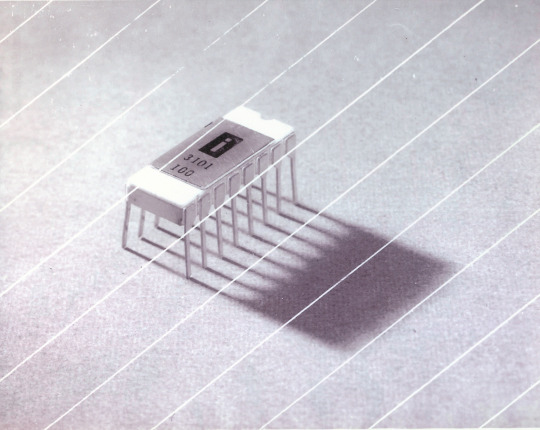

This one is cool because it's cute. Look at that. This thing was completely hand-designed by engineers drawing the shapes of transistor gates on sheets of overhead transparency and exposing pieces of crudely spun silicon to light in a """"cleanroom"""" that would cause most modern fab equipment to swoon like a delicate Victorian lady. Semiconductor manufacturing was maturing at this point but a fab still had more in common with a darkroom for film development than with the mega expensive building sized machines we use today.
As that link above notes, these things were really rough and tumble, and designs were being updated on the scale of weeks as Intel learned, well, how to make chips at an industrial scale. They weren't the first company to do this, in the 60's you could run a chip fab out of a sufficiently well sealed garage, but they were busy building the background that would lead to the next sixty years.
Lisp Chips
This is a family of utterly bullshit prototype processors that failed to be born in the whirlwind days of AI research in the 70's and 80's.
Lisps, a very old but exceedingly clever family of functional programming languages, were the language of choice for AI research at the time. Lisp compilers and interpreters had all sorts of tricks for compiling Lisp down to instructions, and also the hardware was frequently being built by the AI researchers themselves with explicit aims to run Lisp better.
The illogical conclusion of this was attempts to implement Lisp right in silicon, no translation layer.

Yeah, that is Sussman himself on this paper.
These never left labs, there have since been dozens of abortive attempts to make Lisp Chips happen because the idea is so extremely attractive to a certain kind of programmer, the most recent big one being a pile of weird designd aimed to run OpenGenera. I bet you there are no less than four members of r/lisp who have bought an Icestick FPGA in the past year with the explicit goal of writing their own Lisp Chip. It will fail, because this is a terrible idea, but damn if it isn't cool.
There were many more chips that bridged this gap, stuff designed by or for Symbolics (like the Ivory series of chips or the 3600) to go into their Lisp machines that exploited the up and coming fields of microcode optimization to improve Lisp performance, but sadly there are no known working true Lisp Chips in the wild.
Zilog Z80
Perhaps the most important chip that ever just kinda hung out. The Z80 was almost, almost the basis of The Future. The Z80 is bizzare. It is a software compatible clone of the Intel 8080, which is to say that it has the same instructions implemented in a completely different way.
This is, a strange choice, but it was the right one somehow because through the 80's and 90's practically every single piece of technology made in Japan contained at least one, maybe two Z80's even if there was no readily apparent reason why it should have one (or two). I will defer to Cathode Ray Dude here: What follows is a joke, but only barely

The Z80 is the basis of the MSX, the IBM PC of Japan, which was produced through a system of hardware and software licensing to third party manufacturers by Microsoft of Japan which was exactly as confusing as it sounds. The result is that the Z80, originally intended for embedded applications, ended up forming the basis of an entire alternate branch of the PC family tree.
It is important to note that the Z80 is boring. It is a normal-ass chip but it just so happens that it ended up being the focal point of like a dozen different industries all looking for a cheap, easy to program chip they could shove into Appliances.
Effectively everything that happened to the Intel 8080 happened to the Z80 and then some. Black market clones, reverse engineered Soviet compatibles, licensed second party manufacturers, hundreds of semi-compatible bastard half-sisters made by anyone with a fab, used in everything from toys to industrial machinery, still persisting to this day as an embedded processor that is probably powering something near you quietly and without much fuss. If you have one of those old TI-86 calculators, that's a Z80. Oh also a horrible hybrid Z80/8080 from Sharp powered the original Game Boy.
I was going to try and find a picture of a Z80 by just searching for it and look at this mess! There's so many of these things.

I mean the C/PM computers. The ZX Spectrum, I almost forgot that one! I can keep making this list go! So many bits of the Tech Explosion of the 80's and 90's are powered by the Z80. I was not joking when I said that you sometimes found more than one Z80 in a single computer because you might use one Z80 to run the computer and another Z80 to run a specialty peripheral like a video toaster or music synthesizer. Everyone imaginable has had their hand on the Z80 ball at some point in time or another. Z80 based devices probably launched several dozen hardware companies that persist to this day and I have no idea which ones because there were so goddamn many.
The Z80 eventually got super efficient due to process shrinks so it turns up in weird laptops and handhelds! Zilog and the Z80 persist to this day like some kind of crocodile beast, you can go to RS components and buy a brand new piece of Z80 silicon clocked at 20MHz. There's probably a couple in a car somewhere near you.
Pentium (P5 microarchitecture)
Yeah I am going to bring up the Hackers chip. The Pentium P5 series is currently remembered for being the chip that Acidburn geeks out over in Hackers (1995) instead of making out with her boyfriend, but it is actually noteworthy IMO for being one of the first mainstream chips to start pulling serious tricks on the system running it.
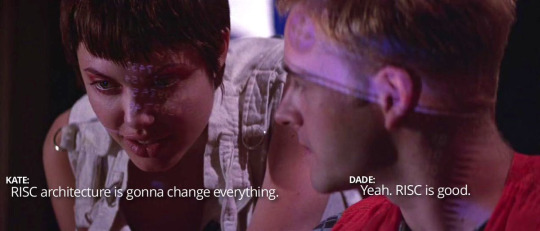
The P5 comes out swinging with like four or five tricks to get around the numerous problems with x86 and deploys them all at once. It has superscalar pipelining, it has a RISC microcode, it has branch prediction, it has a bunch of zany mathematical optimizations, none of these are new per se but this is the first time you're really seeing them all at once on a chip that was going into PC's.
Without these improvements it's possible Intel would have been beaten out by one of its competitors, maybe Power or SPARC or whatever you call the thing that runs on the Motorola 68k. Hell even MIPS could have beaten the ageing cancerous mistake that was x86. But by discovering the power of lying to the computer, Intel managed to speed up x86 by implementing it in a sensible instruction set in the background, allowing them to do all the same clever pipelining and optimization that was happening with RISC without having to give up their stranglehold on the desktop market. Without the P5 we live in a very, very different world from a computer hardware perspective.
From this falls many of the bizzare microcode execution bugs that plague modern computers, because when you're doing your optimization on the fly in chip with a second, smaller unix hidden inside your processor eventually you're not going to be cryptographically secure.
RISC is very clearly better for, most things. You can find papers stating this as far back as the 70's, when they start doing pipelining for the first time and are like "you know pipelining is a lot easier if you have a few small instructions instead of ten thousand massive ones.
x86 only persists to this day because Intel cemented their lead and they happened to use x86. True RISC cuts out the middleman of hyperoptimizing microcode on the chip, but if you can't do that because you've girlbossed too close to the sun as Intel had in the late 80's you have to do something.
The Future
This gets us to like the year 2000. I have more chips I find interesting or cool, although from here it's mostly microcontrollers in part because from here it gets pretty monotonous because Intel basically wins for a while. I might pick that up later. Also if this post gets any longer it'll be annoying to scroll past. Here is a sample from a post I have in my drafts since May:

I have some notes on the weirdo PowerPC stuff that shows up here it's mostly interesting because of where it goes, not what it is. A lot of it ends up in games consoles. Some of it goes into mainframes. There is some of it in space. Really got around, PowerPC did.
153 notes
·
View notes
Text
Tom Bosley before Happy Days (2 of 2) (1959-1972)
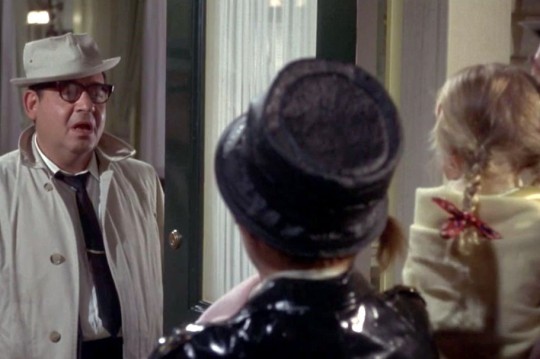
Tom Bosley's next movie in 1968 was as a family doctor in Yours, Mine and Ours starring Lucille Ball and Henry Fonda.
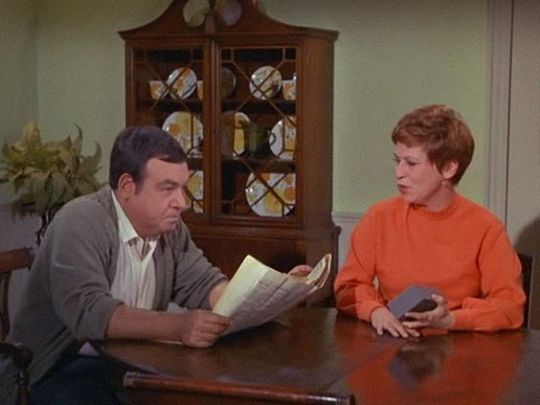
In Dec. 1968 Tom Bosley teamed up with Alice Ghostley as KAOS agents in an episode of Get Smart.


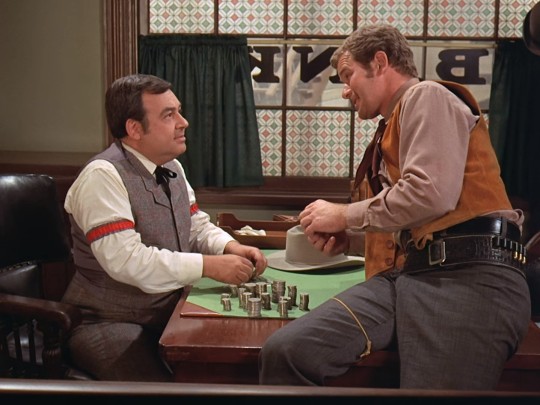
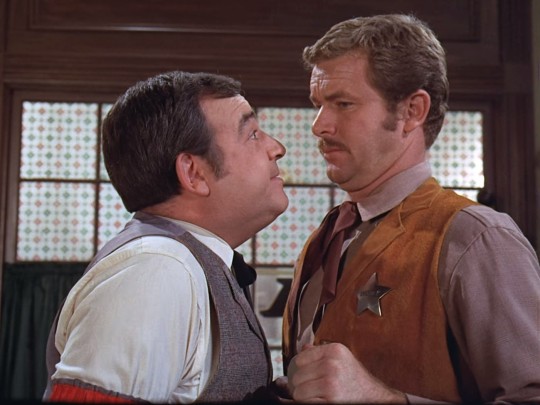
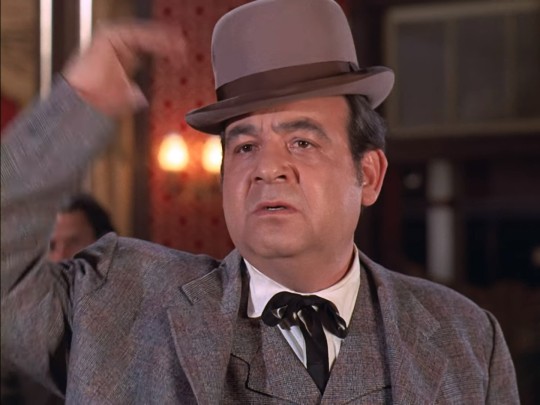


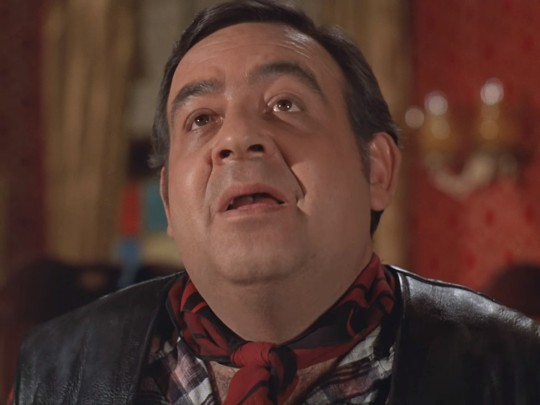
Tom Bosley guest-starred in an episode of The Virginian in 1969.
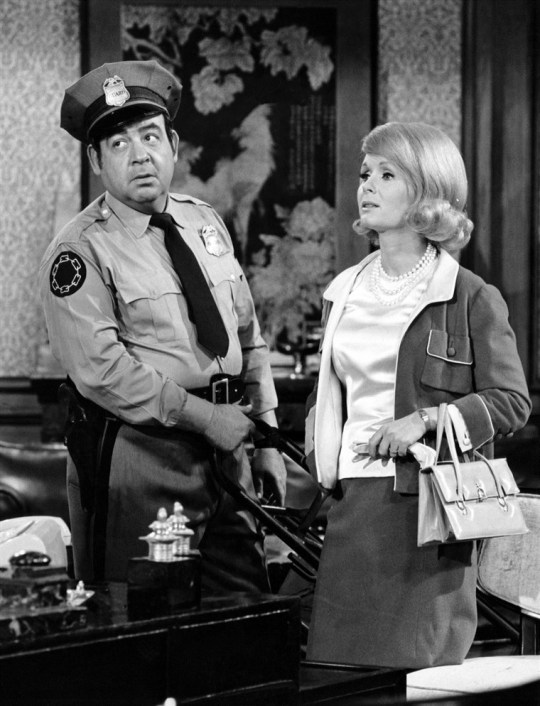
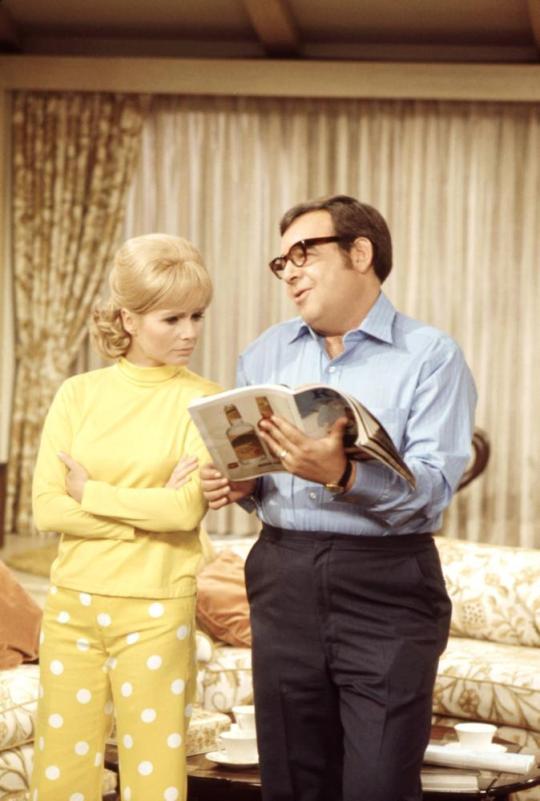
In 1969 Tom Bosley started as a regular on The Debbie Reynolds Show. He played her brother-in-law in 20 of the 26 episodes of the one season it was on.


Tom Bosley also guest-starred in 2 episodes of Bonanza, 1 in 1968 and 1 in 1969. He is shown here with, of course, Dan Blocker.
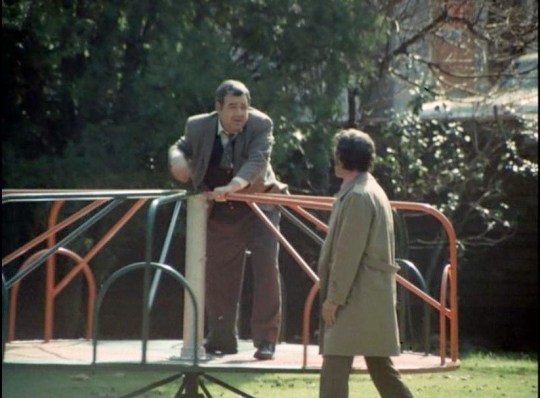
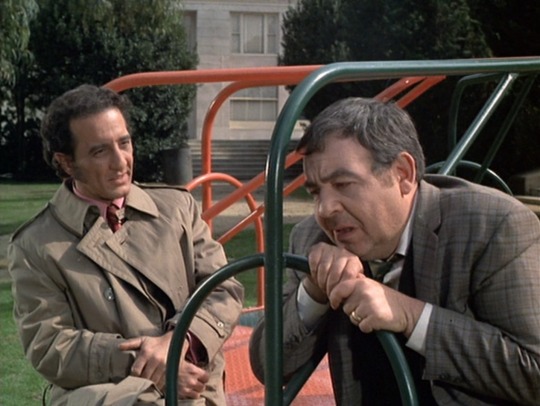
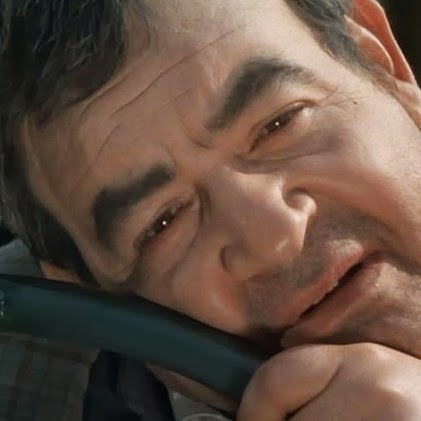
Tom Bosley was in the pilot episode of Night Gallery which aired in Nov. 1969. He was in the segment entitled 'Eyes' which is one of the more memorable offerings of the Night Gallery series. It starred Joan Crawford, screenplay by Rod Serling himself and directed by a young Steven Spielberg.
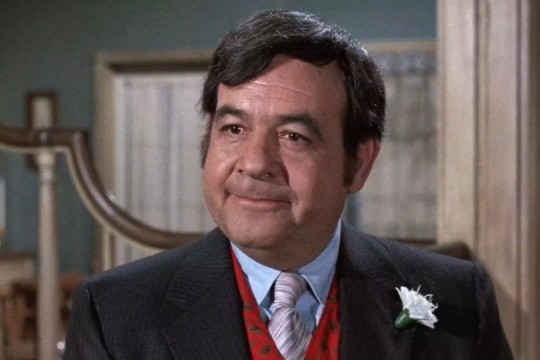


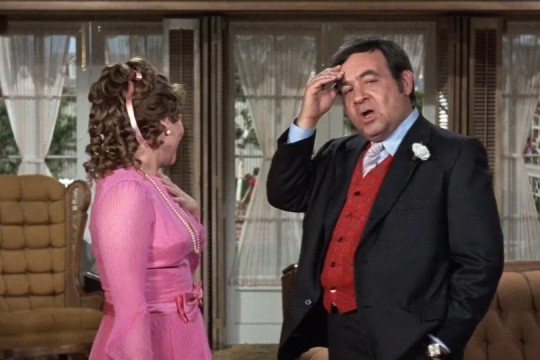
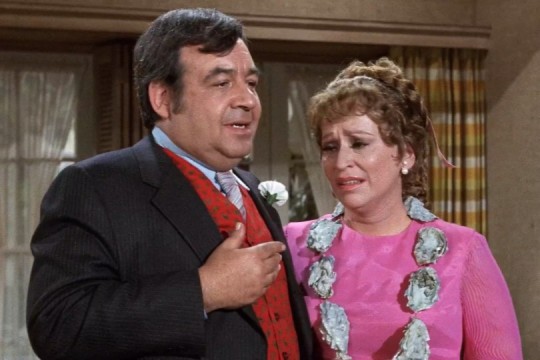
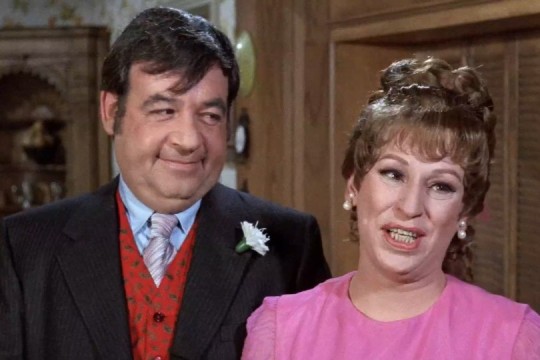
Tom Bosley played Esmeralda's old boyfriend in an episode of Bewitched in 1971, again teaming up with Alice Ghostley.


Also in 1971, Tom Bosley appeared in an episode of Mission: Impossible. Pictured with Harold J. Stone.


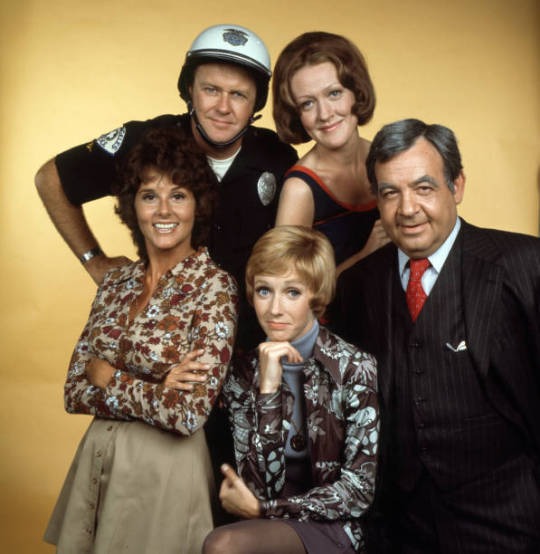
In the fall of 1972 Tom Bosley was cast in The Sandy Duncan Show. This was a reformulation of the show Funny Face from the previous year. The only thing that remained from Funny Face was Sandy Duncan's character. The new cast also included M. Emmet Walsh. Bosley played Sandy's boss at an Advertising Company. The show lasted 13 episodes, which is how many episodes Funny Face lasted.
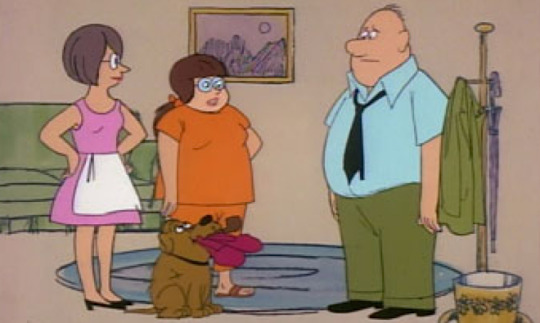
Also in the fall of 1972 Tom Bosley started in the animated Wait Til Your Father Gets Home voicing the father Harry Boyle. This show lasted 3 seasons and 48 episodes.
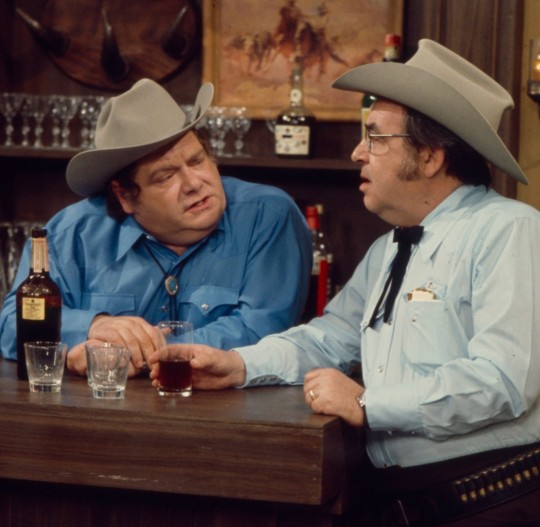
In 1973, Tom Bosley guest-starred in an episode of another 13-episode seres, A Touch of Grace starring Shirley Booth. Pictured here with comic Jackie Vernon.
During these years Tom Bosley also guest-starred in episodes Mod Squad, The Sixth Sense, Marcus Welby, MD, Medical Center, Love, American Style, Maude, McMillan & Wife and others. He also did many TV movies and was a regular on The Dean Martin Show.
45 notes
·
View notes
Text

"See you later, Joe…": On this day, Dec. 30th, 2002, the Punk Rock Warlord Joe Strummer’s funeral was held in private at West London Crematorium where he was cremated (from a Los Angeles Times clipping dated January 1, 2003).
The funeral was held on a dark and grey Monday with rain belting down in bucketfuls and the service was attended by his widow Lucinda and two daughters, the rest of the Clash, Mick Jones, Paul Simonon and Topper Headon, Chrissie Hynde and Jeannette Lee (formerly of PIL, then co-managing director of Rough Trade), Jim Jarmusch, Bob Gruen, Rat Scabies, Pearl Harbour, Joe Ely, Don Letts, the Clash road manager Johnny Greene, some more close friends and relatives, according to Chris Salewicz, who wrote 'Redemption Song: The Definitive Biography of Joe Strummer'.
He remembers that he heard about Joe’s death after Don Letts called him and when he called up Mick Jones, who in between sobs was his usual funny self, he told him
"… how glad he was he’d played with Joe at the benefit for the Fire Brigades Union five weeks before.
-‘I don’t even know what religion he was,’ Mick said.
-‘Some kind of Scottish low-church Presbyterian, I imagine,’ I suggested.
-‘Church of Beer, probably,’ laughed Mick, tearfully.
"…Joe’s coffin slowly comes in, held aloft by half a dozen pallbearers. It is placed down at the far end of the chapel. Keith Allen, the actor and comedian, steps forward and positions a cowboy hat on top of it. There’s a big sticker on the nearest end: ‘Question Authority’, it reads, then in smaller letters: ‘Ask Me Anything’. Next to it is a smaller sticker: ‘Vinyl Rules’. On the sides of the coffin are more messages: ‘Get In, Hold On, Sit Down, Shut Up’ and ‘Musicians Can’t Dance’. Around the end wall of the chapel are flags of all nations. More people are ushered in, like the kids Joe would make sure got through the stage-door at Clash gigs, until the place is crammed.
…‘Wandering Star’ [by Lee Marvin] begins to play. ‘See you later, Joe,’ someone says. Yeah, see you later, Joe…"
(from Chris Salewicz's 'Redemption Song: The Definitive Biography of Joe Strummer'.)
Soundtrack of the day: ‘Wandering Star’ - Lee Marvin (1969)
"When I get to heaven, tie me to a tree/
Or I'll begin to roam, and soon you know where I will be/
I was born under a wandrin' star/
A wandrin' wandrin' star…"
A detailed rundown of Joe's funeral from Chris Salewicz's book: https://www.litres.ru/book/chris-salewicz/redemption-song-the-definitive-biography-of-joe-strummer-39768017/chitat-onlayn/
83 notes
·
View notes
Text
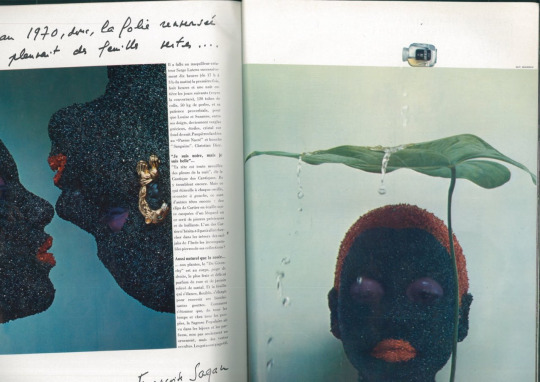
Vogue Paris (Dec 1969)
323 notes
·
View notes
Text

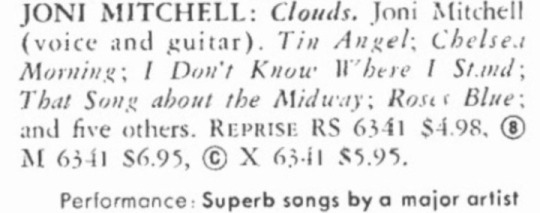

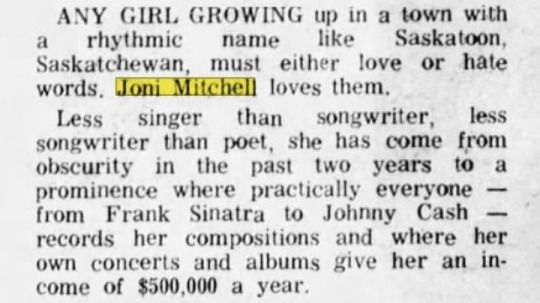
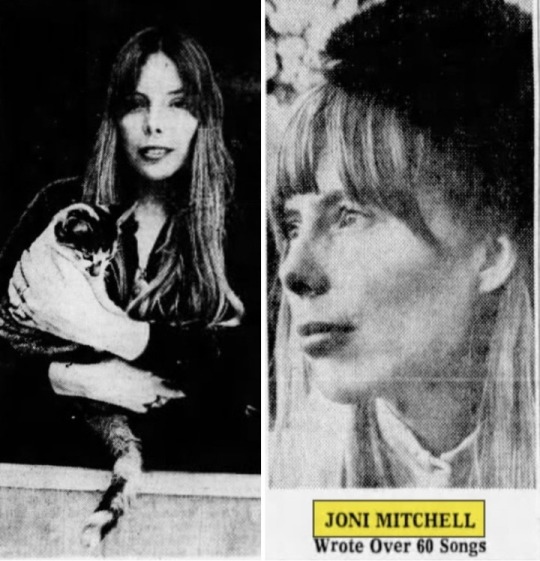

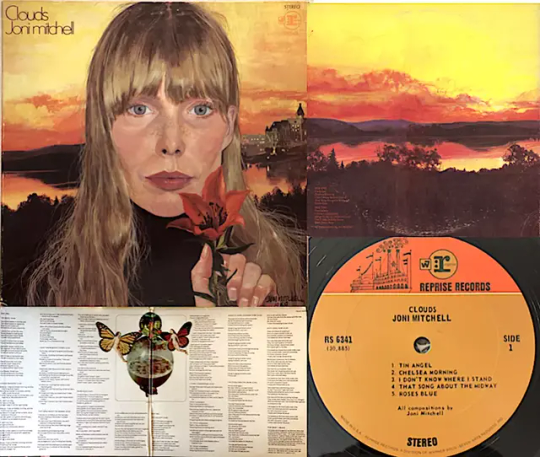
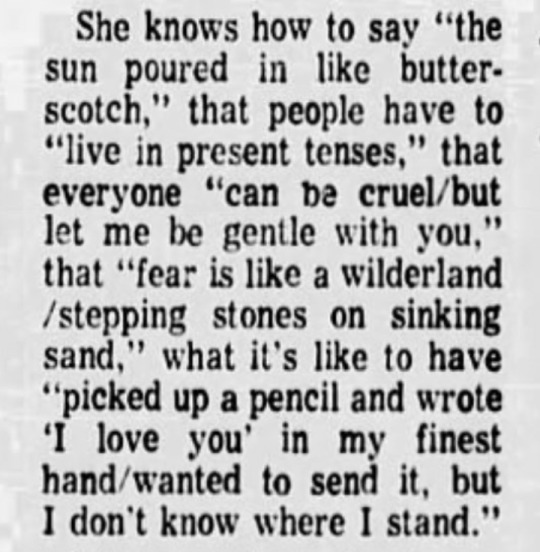


Happy birthday to Clouds, released on May 1st, 1969! 🌥
1. D.H., "Recordings of Special Merit," Stereo Review, September 1969. Accessed through jonimitchell.com. // 2. Clouds album cover, painted by Joni Mitchell, 1969. // 3. D.H., "Recordings of Special Merit." // 4. madraven07, comment under "Joni Mitchell - Clouds (Full Album)" on YouTube, 2024. // 5. Min S. Yee, "Pressed-Flower Child: Joni Mitchell Grew Up With Love for Words," Courier-Post (Camden, New Jersey), September 6, 1969, p. 50. Accessed through newspapers.com. // 6. Yee, "Pressed Flower Child," photographer uncredited. // 7. "Joni Mitchell Brings Music of Songs to Kleinhans Dec. 13," The Buffalo News (Buffalo, New York), December 3, 1969, p. 64. Accessed through newspapers.com. // 8. Joni Mitchell, "I Think I Understand," Clouds, 1969. // 9. eBay listing, "JONI MITCHELL rare LP." // 10. Robb Baker, "The Sound," Chicago Tribune, June 22, 1969, p. 13. Accessed through newspapers.com. // 11. promotional poster for Joni Mitchell's homecoming concert in Saskatoon, March 14, 1969. Accessed through jonimitchell.com. // 12. Joni Mitchell, "Both Sides Now," Clouds, 1969.
#joni mitchell#clouds#i love this album so much!! chelsea morning is THE song for may#again i was late by a day but. oh well#i think this edit turned out to be about saskatoon as much as clouds lmao#my edit#webweaving#?
31 notes
·
View notes
Text
Interview to Jimmy Page

"There were incredible scenes wherever we played [...] At the end of each set the people came swarming forward and we would play encore after encore. I think they encouraged us to do our best. They knew that if they cheered loud enough it would make us put everything into it."
- Jimmy Page (Top of the Pops - Dec. 13, 1969)
#jimmy page#pagey#led zeppelin#john bonham#bonzo#john paul jones#jonesy#robert plant#planty#60s#70s#70s rock#70s music#rock music#ourshadowstallerthanoursoul
53 notes
·
View notes
Text

Veruschka and a St. Bernard photographed by Franco Rubartelli in the Swiss Alps for French Vogue, Dec 1968/Jan 1969.
61 notes
·
View notes